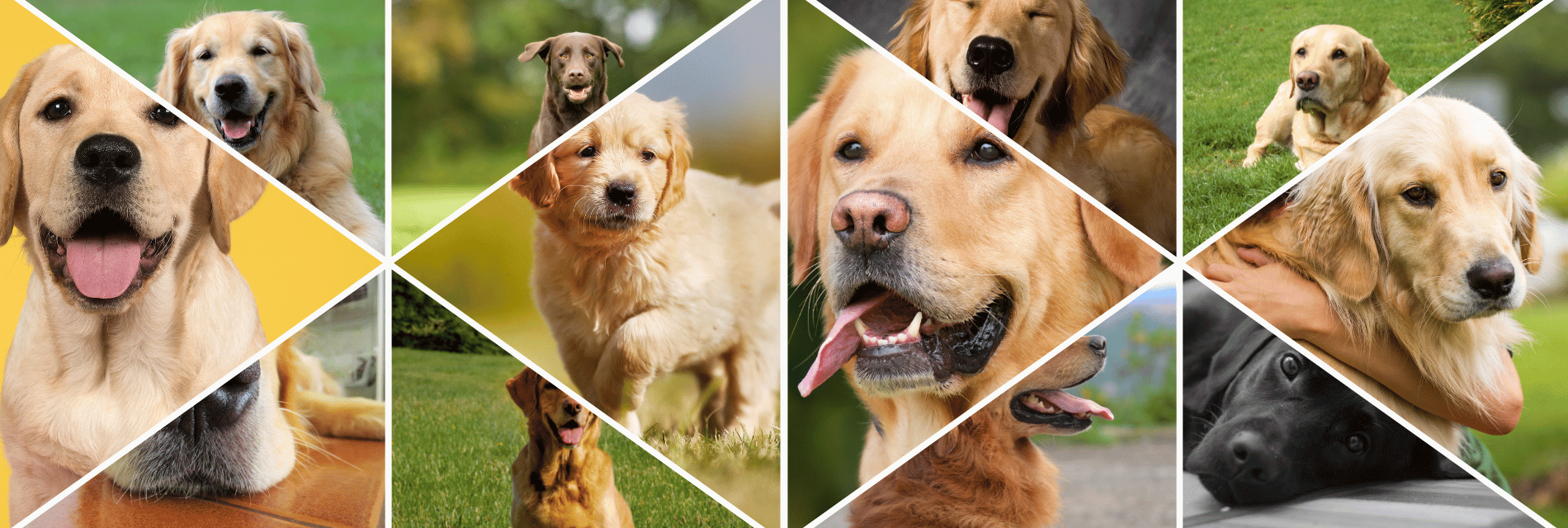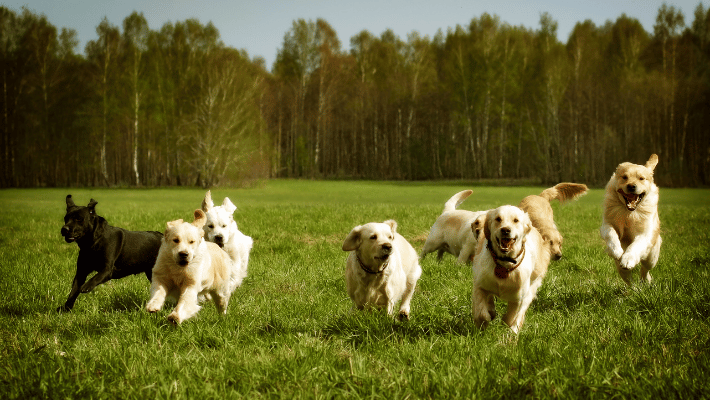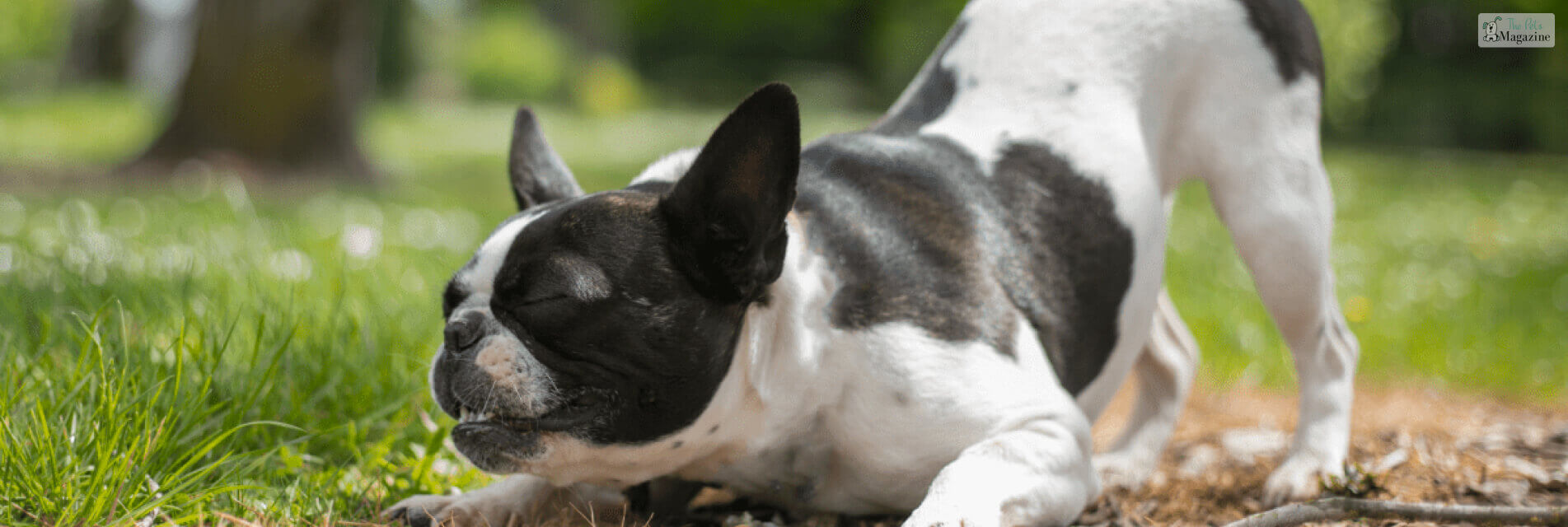Labrador vs Golden Retriever: Which Breed Is Perfect Fit for You?


You’re on the hunt for a new furry companion, and you’ve narrowed it down to two of the most popular dog breeds: the labrador vs golden retriever. Both are beloved family pets known for their friendly dispositions and loyalty, but which one is the perfect match for your lifestyle? In this comprehensive guide, we’ll dive into the key differences between these two woof-tastic breeds, helping you make an informed decision on which one to welcome into your home.
Labrador Retrievers and Golden Retrievers have captured the hearts of dog lovers worldwide with their endearing personalities and versatility. From their origins as hunting companions to their modern roles as service dogs, therapy dogs, and cherished family members, these breeds have proven their worth time and time again. However, as with any dog breed, they have distinct characteristics that may align better with certain lifestyles and preferences.
So, let’s embark on a journey to uncover the unique traits of Labrador vs Golden Retriever, exploring their physical attributes, temperaments, exercise needs, training requirements, grooming demands, and potential health concerns. By the end of this article, you’ll have a clear understanding of which breed is the perfect fit for you and your family.
Physical Characteristics
Lets check out the physical characteristics of both these breeds:
Labrador Retrievers

Labrador Retrievers are known for their sturdy, muscular build and athletic appearance. These dogs typically stand between 21 to 24 inches tall at the shoulder and can weigh anywhere from 55 to 80 pounds, with males being slightly larger than females.
Their coat is short, dense, and weather-resistant, making them well-suited for outdoor activities and water sports. Labradors come in three main colors: black, yellow, and chocolate, with variations in shade intensity. Their broad heads, floppy ears, and friendly expressions add to their endearing charm.
One of the most distinctive physical features of Labrador Retrievers is their otter-like tail, which they use as a powerful rudder when swimming. Their webbed feet and strong hindquarters also contribute to their exceptional swimming abilities, a trait that harks back to their origins as waterfowl retrievers.
Golden Retrievers

Golden Retrievers are known for their striking golden coats and elegant, muscular frames. These dogs typically stand between 21 to 24 inches tall at the shoulder and can weigh anywhere from 55 to 75 pounds, with males being slightly larger than females.
Their coat is dense, water-repellent, and ranges from light golden to deep reddish-golden in color. Golden Retrievers have a broad skull, floppy ears, and a friendly, intelligent expression that melts hearts.
One of the most distinctive physical features of Golden Retrievers is their feathering, which refers to the longer, silkier hair on their legs, tail, and underbody. This feathering adds to their regal appearance and helps protect them from water and brush when working in the field.
Temperament and personality traits of Labrador Retrievers

Labrador Retrievers are renowned for their friendly, outgoing, and affectionate personalities. These dogs are true people-pleasers, always eager to make their owners happy and receive praise and attention in return.
Here are some key temperament traits of Labrador Retrievers:
- Friendly and sociable: Labradors are known for their friendly nature and ability to get along with people of all ages, including children and strangers.
- Gentle and patient: Despite their size, Labradors are gentle giants, making them excellent companions for families with children.
- Eager to please: These dogs have a strong desire to please their owners, which makes them highly trainable and obedient.
- Energetic and playful: Labradors are full of energy and love to play, making them excellent companions for active families.
- Loyal and devoted: Once bonded with their owners, Labradors form strong attachments and are fiercely loyal companions.
Temperament and personality traits of Golden Retrievers
Golden Retrievers are often described as gentle, loving, and intelligent companions. Their friendly and affectionate nature has made them one of the most popular family dogs worldwide.

Here are some key temperament traits of Golden Retrievers:
- Gentle and patient: Golden Retrievers are known for their calm and gentle demeanor, making them excellent companions for families with children.
- Intelligent and eager to learn: These dogs are highly trainable and excel in various activities, including obedience, agility, and therapy work.
- Friendly and sociable: Golden Retrievers are outgoing and friendly, enjoying the company of people and other pets.
- Affectionate and loyal: Once bonded with their owners, Golden Retrievers form strong attachments and are devoted companions.
- Confident and adaptable: These dogs are versatile and can adapt to various living situations, from apartments to large homes with yards.
Exercise and activity requirements of Labrador Retrievers

Labrador Retrievers are high-energy dogs that require plenty of exercise and mental stimulation to stay happy and healthy. Their athletic build and endurance make them excellent companions for active families or individuals who enjoy outdoor activities.
Here are some exercise and activity recommendations for Labrador Retrievers:
- Daily walks or runs: Labradors need at least one to two hours of exercise per day, which can include brisk walks, jogs, or runs.
- Swimming: These dogs are natural swimmers and love water activities, making swimming an excellent form of exercise.
- Hiking and outdoor adventures: Labradors thrive on outdoor adventures, such as hiking, camping, and exploring new trails.
- Interactive games: Playing fetch, tug-of-war, or other interactive games can provide mental stimulation and burn off excess energy.
- Agility or obedience training: Participating in activities like agility or obedience training can challenge their minds and bodies.
Exercise and activity requirements of Golden Retrievers

Golden Retrievers are active and energetic dogs that require regular exercise and mental stimulation to maintain their physical and mental well-being. While they may not be as high-energy as Labradors, they still need plenty of opportunities to burn off their energy.
Here are some exercise and activity recommendations for Golden Retrievers:
- Daily walks or runs: Golden Retrievers need at least one hour of exercise per day, which can include walks, jogs, or runs.
- Swimming: Like Labradors, Golden Retrievers are excellent swimmers and enjoy water activities.
- Hiking and outdoor adventures: These dogs thrive on outdoor adventures and love exploring new trails and environments.
- Interactive games: Playing fetch, frisbee, or other interactive games can provide mental stimulation and exercise.
- Obedience or agility training: Participating in activities like obedience or agility training can challenge their minds and bodies.
Training and obedience of Labrador Retrievers
Labrador Retrievers are known for their intelligence and eagerness to please, making them highly trainable and obedient companions. However, proper training and socialization are crucial to ensure they develop good manners and behavior.

Here are some key points about training and obedience for Labrador Retrievers:
- Early socialization: Labradors should be exposed to various people, animals, and environments from an early age to prevent fear or aggression.
- Positive reinforcement training: These dogs respond best to positive reinforcement techniques, such as treats, praise, and rewards.
- Consistency and patience: Consistent training methods and patience are essential when working with Labradors, as they can be easily distracted.
- Obedience training: Enrolling in obedience classes can help Labradors learn basic commands and manners, as well as provide mental stimulation.
- Ongoing training: Training should be an ongoing process throughout a Labrador’s life to maintain their obedience and prevent behavioral issues.
Training and obedience of Golden Retrievers
Golden Retrievers are highly intelligent and eager to please, making them excellent candidates for training and obedience. With proper guidance and positive reinforcement, these dogs can excel in various activities and become well-mannered companions.

Here are some key points about training and obedience for Golden Retrievers:
- Early socialization: Like Labradors, Golden Retrievers benefit from early socialization to prevent fear or aggression towards people, animals, or new environments.
- Positive reinforcement training: These dogs respond best to positive reinforcement techniques, such as treats, praise, and rewards.
- Consistency and patience: Consistency in training methods and patience are essential when working with Golden Retrievers, as they can be easily distracted.
- Obedience training: Enrolling in obedience classes can help Golden Retrievers learn basic commands and manners, as well as provide mental stimulation.
- Ongoing training: Training should be an ongoing process throughout a Golden Retriever’s life to maintain their obedience and prevent behavioral issues.
Grooming needs of Labrador Retrievers

Labrador Retrievers have a short, dense coat that requires minimal grooming compared to some other breeds. However, regular grooming is still important to keep their coat healthy and maintain their overall appearance.
Here are some grooming tips for Labrador Retrievers:
- Brushing: Brush your Labrador’s coat once or twice a week with a slicker brush or grooming mitt to remove loose hair and distribute natural oils.
- Bathing: Bathe your Labrador every 8 to 12 weeks or as needed, using a mild dog shampoo to keep their coat clean and shiny.
- Ear cleaning: Clean your Labrador’s ears regularly with a gentle ear cleaner to prevent wax buildup and infections.
- Nail trimming: Trim your Labrador’s nails every 4 to 6 weeks to prevent overgrowth and potential discomfort.
- Teeth brushing: Brush your Labrador’s teeth regularly with a dog-safe toothpaste to promote good dental hygiene and prevent gum disease.
Grooming needs of Golden Retrievers

Golden Retrievers have a dense, water-repellent coat that requires regular grooming to maintain its healthy appearance and prevent matting or tangling.
Here are some grooming tips for Golden Retrievers:
- Brushing: Brush your Golden Retriever’s coat at least once or twice a week with a slicker brush or grooming rake to remove loose hair and prevent matting.
- Bathing: Bathe your Golden Retriever every 6 to 8 weeks or as needed, using a mild dog shampoo to keep their coat clean and shiny.
- Ear cleaning: Clean your Golden Retriever’s ears regularly with a gentle ear cleaner to prevent wax buildup and infections.
- Nail trimming: Trim your Golden Retriever’s nails every 4 to 6 weeks to prevent overgrowth and potential discomfort.
- Teeth brushing: Brush your Golden Retriever’s teeth regularly with a dog-safe toothpaste to promote good dental hygiene and prevent gum disease.
Health issues and lifespan of Labrador Retrievers

Like all breeds, Labrador Retrievers are prone to certain health issues that potential owners should be aware of. Early detection and proper care can help manage or prevent many of these conditions.
Here are some common health issues and the average lifespan of Labrador Retrievers:
- Hip and elbow dysplasia: These orthopedic conditions can cause joint pain and mobility issues in Labradors.
- Obesity: Labradors have a tendency to overeat, which can lead to obesity and related health problems if not managed properly.
- Eye conditions: Labradors may be prone to eye conditions such as progressive retinal atrophy (PRA) and cataracts.
- Ear infections: Due to their floppy ears, Labradors are susceptible to ear infections, which can be prevented with proper ear cleaning.
- Lifespan: The average lifespan of a Labrador Retriever is 10 to 12 years.
Health issues and lifespan of Golden Retrievers

While generally considered a healthy breed, Golden Retrievers are still prone to certain health issues that potential owners should be aware of. Early detection and proper care can help manage or prevent many of these conditions.
Here are some common health issues and the average lifespan of Golden Retrievers:
- Hip and elbow dysplasia: These orthopedic conditions can cause joint pain and mobility issues in Golden Retrievers.
- Cancers: Golden Retrievers have a higher risk of developing certain types of cancers, such as lymphoma and hemangiosarcoma.
- Eye conditions: Golden Retrievers may be prone to eye conditions such as cataracts and pigmentary uveitis.
- Skin allergies: These dogs can be susceptible to skin allergies and hot spots, which may require special care and management.
- Lifespan: The average lifespan of a Golden Retriever is 10 to 12 years.
Choosing between a Labrador Vs Golden Retriever – Factors to consider

Now that you have a comprehensive understanding of the key differences between Labrador vs Golden Retriever, it’s time to consider which breed would be the best fit for your lifestyle and preferences.
Here are some factors to consider when choosing between these two breeds:
- Energy levels: If you lead an active lifestyle and enjoy outdoor activities, a Labrador Retriever may be the better choice due to their higher energy levels. If you prefer a slightly more relaxed companion, a Golden Retriever might be a better fit.
- Living space: Both breeds can adapt to various living situations, but Labradors may do better with access to a yard or outdoor space due to their higher energy levels.
- Grooming needs: Golden Retrievers require more frequent grooming and brushing to maintain their coat, while Labradors have a shorter, lower-maintenance coat.
- Potential health issues: Consider the potential health issues associated with each breed and consult with a reputable breeder or veterinarian to understand the risks and preventative measures.
- Family dynamics: Both breeds are excellent family companions, but Labradors may be more energetic and playful with children, while Golden Retrievers tend to be more gentle and patient.
- Training and obedience: Both breeds are highly trainable, but Labradors may be more eager to please and responsive to training due to their desire to work and please their owners.
Ultimately, the decision between a Labrador Retriever and a Golden Retriever will depend on your personal preferences, lifestyle, and ability to meet the breed’s specific needs. Consulting with reputable breeders, veterinarians, and experienced dog owners can also provide valuable insights to help you make an informed choice.
Conclusion – Which breed is the perfect fit for you?
After exploring the unique characteristics of Labrador vs Golden Retriever, it’s clear that both breeds have their own distinct charms and advantages. Whether you choose the energetic and eager-to-please Labrador or the gentle and affectionate Golden Retriever, you’re sure to gain a loyal and loving companion.
If you lead an active lifestyle and enjoy outdoor adventures, the high-energy and athletic Labrador Retriever may be the perfect fit. Their eagerness to please and trainability make them excellent companions for families or individuals who are committed to providing plenty of exercise and mental stimulation.
On the other hand, if you prefer a slightly more relaxed companion with a gentle and patient demeanor, the Golden Retriever could be the ideal choice. Their intelligence and versatility make them well-suited for various activities, from obedience training to therapy work, while their affectionate nature ensures they’ll be a cherished member of your family.
Regardless of your choice, both breeds require proper socialization, training, exercise, and care to thrive and develop into well-mannered and healthy companions. By understanding their unique needs and providing them with a loving and enriching environment, you’ll be rewarded with a lifetime of unconditional love and loyalty from your furry friend.
If you’re ready to welcome a Labrador vs Golden Retriever into your life, visit our website to connect with reputable breeders and learn more about responsible pet ownership. Our team of experts is also available to answer any additional questions you may have and guide you through the process of finding the perfect furry companion.
Certainly! Here’s a structured outline for your 2000-word article comparing Labrador vs Golden Retriever:
Introduction
- Introduce the popularity of both breeds.
- Briefly mention their commonalities and differences.
- State the purpose of the article: to help potential dog owners make an informed choice.
History and Origin
- Trace the origins of the Labrador Retriever.
- Explore the development of the Golden Retriever.
- Compare their historical roles and how they’ve evolved as breeds.
Physical Characteristics
- Describe the typical size, coat, and color of Labradors.
- Outline the physical traits of Golden Retrievers.
- Discuss the differences in grooming needs due to their coats.
Temperament and Personality
- Compare their general dispositions and energy levels.
- Discuss their suitability for families and compatibility with children.
- Evaluate their behavior with other pets.
Training and Intelligence
- Assess their trainability and intelligence.
- Provide insights into their working dog backgrounds.
- Compare their success in obedience and agility trials.
Health and Lifespan
- Discuss common health issues in both breeds.
- Compare their average lifespans.
- Offer advice on preventive care and regular health check-ups.
Exercise and Activity Needs
- Detail the exercise requirements of Labradors.
- Explain the activity needs of Golden Retrievers.
- Offer tips for keeping each breed physically and mentally stimulated.
Role in Society
- Explore their roles as service dogs, therapy dogs, and in search-and-rescue.
- Discuss their presence in popular culture and media.
Pros and Cons of Each Breed
- List the advantages and disadvantages of owning a Labrador.
- List the advantages and disadvantages of owning a Golden Retriever.
Conclusion
- Summarize the key points made throughout the article.
- Offer final thoughts on choosing between a Labrador and a Golden Retriever.
- Encourage readers to consider their lifestyle and preferences before deciding.
Read Also:








Leave A Comment